Calton Hill
Calton Hill (; Scottish Gaelic: Cnoc Coilltinn) is a hill in central Edinburgh, Scotland, situated beyond the east end of Princes Street and included in the city's UNESCO World Heritage Site. Views of, and from, the hill are often used in photographs and paintings of the city.
Calton Hill is the headquarters of the Scottish Government, which is based at St Andrew's House, on the steep southern slope of the hill. The Scottish Parliament Building and other prominent buildings such as Holyrood Palace lie near the foot of the hill. Calton Hill is also the location of several monuments and buildings: the National Monument, the Nelson Monument, the Dugald Stewart Monument, the old Royal High School, the Robert Burns Monument, the Political Martyrs' Monument and the City Observatory.
The area lies between the Edinburgh districts of Greenside and Abbeyhill.
There was possibly a prehistoric hillfort on Calton Hill and an area used for quarrying (the Quarry Holes at the eastern end).[1] By his charter of 1456, James II granted the community of Edinburgh the valley and the low ground between Calton Hill and Greenside for performing tournaments, sports and other warlike deeds.[2] This was part of his policy of military preparedness that saw the Act of 1457 banning golf and football and ordering archery practice every Sunday. This natural amphitheatre was also used for open-air theatre and saw performances of the early Scots play "Ane Pleasant Satyre of the Thrie Estaitis" by Sir David Lyndsay. In May 1518 the Carmelite Friars (also known as White Friars and locally based at South Queensferry), were granted lands by charter from the city at Greenside and built a small monastery there.
Monasteries were abandoned following the Scottish Reformation of 1560, and the Calton Hill monastery therefore stood empty before conversion in 1591 into a hospital for lepers, founded by John Robertson, a city merchant.[3] So severe were the regulations that escape, or even the opening of the gate of the hospital between sunset and sunrise, would incur the penalty of death carried out on the gallows erected at the gate. The monastery would appear to have been located at the north-east end of Greenside Row and its site is shown there on the 1931 Ordnance Survey maps.[4] Ten skeletons found in July 2009 during roadworks to create a new tramway in Leith Walk (project cancelled from York Place to Leith but revived and completed in 2023), are believed to have been connected with the hospital.[5]
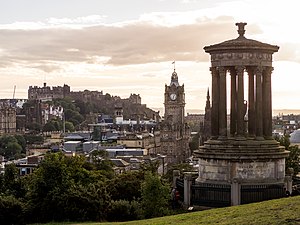 View over Edinburgh, with the Dugald Stewart Monument in the foreground
View over Edinburgh, with the Dugald Stewart Monument in the foregroundThe Calton area was owned by the Logan family of Restalrig but their lands were forfeited in 1609 following the posthumous sentence of treason on Robert Logan. The lands of Restalrig and Calton, otherwise known as Easter and Wester Restalrig, passed to the Elphinstone family. Sir James Elphinstone was made Lord Balmerino in 1604 and in 1673 the lands of Restalrig and Calton were erected into a single barony. In 1725, the western side of Calton Hill was disjoined and sold to the royal burgh of Edinburgh.[6] The eastern end was owned by the charitable institution of Heriot's Trust.[6] Calton remained a burgh of barony (although it was not administered as such) until it was formally incorporated into Edinburgh by the Municipality Extension Act of 1856.
In 1631, the then Lord Balmerino granted a charter to The Society of the Incorporated Trades of Calton forming a society or corporation.[1] This also gave the Society the exclusive right to trade within Calton and the right to tax others who wished to do so. Normally the trades of burghs were separately incorporated, for example in the Canongate there were eight incorporations, but the Incorporated Trades of Calton allowed any tradesman to become a member providing they were healthy and their work was of an acceptable standard. This lack of restrictive practices allowed a thriving trade to develop.
The village of Calton was situated at the bottom of the ravine at the western end of Calton Hill (hence its earlier name of Craigend), on the road from Leith Wynd in Edinburgh and North Back of the Canongate to Leith Walk and also to Broughton and thence the Western Road to Leith. In the village, the street was variously known as St. Ninian's Row or Low Calton. Many of the old buildings here were demolished at the time of the Waterloo Place and Regent Bridge development, which bridged the ravine, from 1816. The remaining old village houses of the Low Calton were removed in the 1970s.
 Washerwomen on Calton Hill (1825)
Washerwomen on Calton Hill (1825)Although located near Edinburgh, Calton was in South Leith Parish and its inhabitants went to church in Leith and were buried in the churchyard there. As the village developed, it became more convenient to have burials nearby and, in 1718, the Society bought a half acre of land at a cost of £1013 from Lord Balmerino for use as a burial ground. This became known as Old Calton Burial Ground. Permission was granted for an access road, originally known as High Calton and now the street called Calton Hill, up the steep hill from the village to the burial ground. The group of 1760s houses near the top of this street are all that remain of the old village.
In 1787, the artist Robert Barker, inspired by walking on the hill, created the world's first panorama - an immersive 360 degree view depicting Edinburgh from the tower of the City Observatory[7] at the summit of Calton Hill.




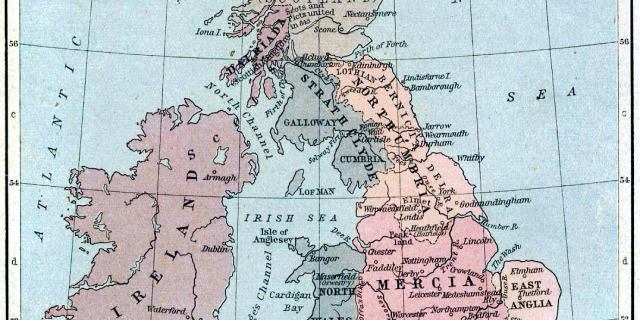








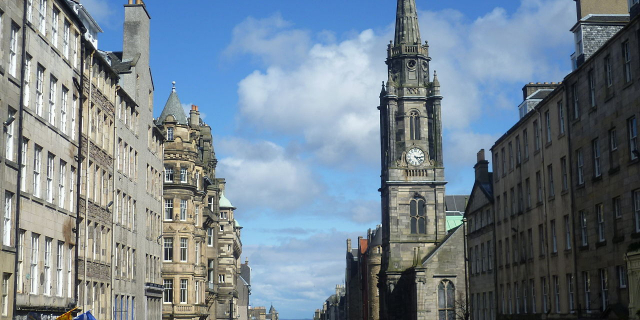




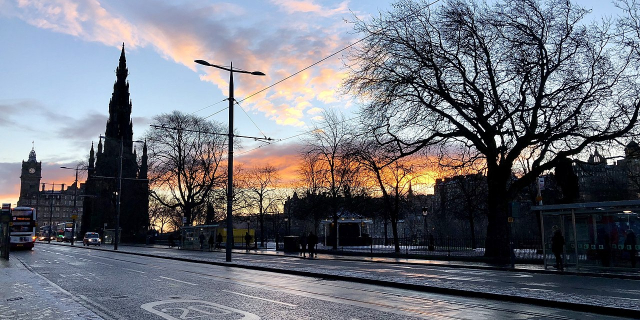
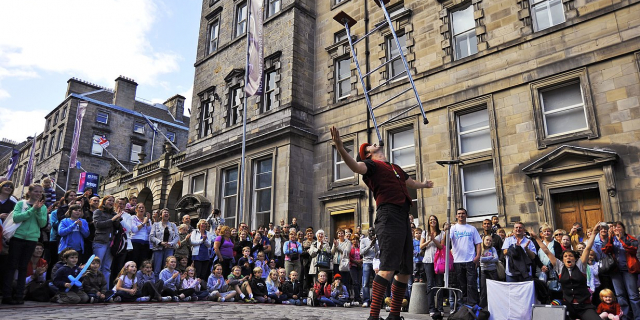


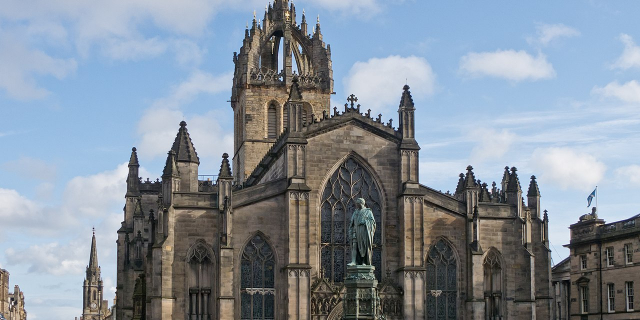

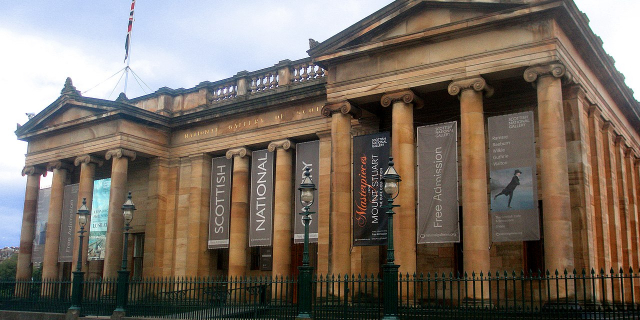



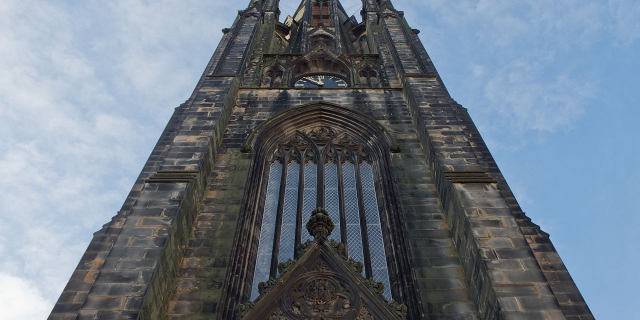



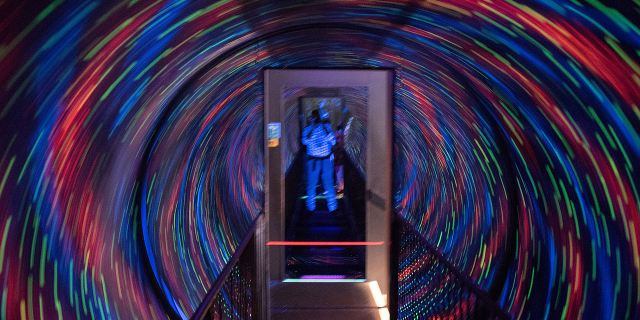


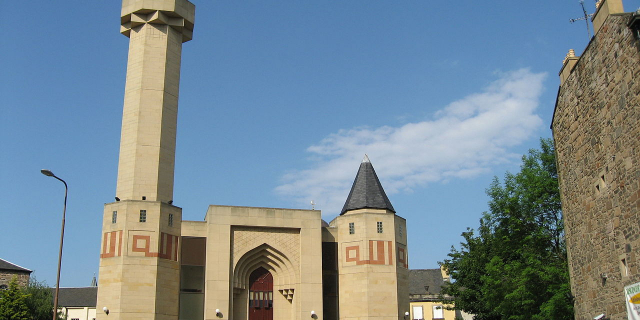

Add new comment